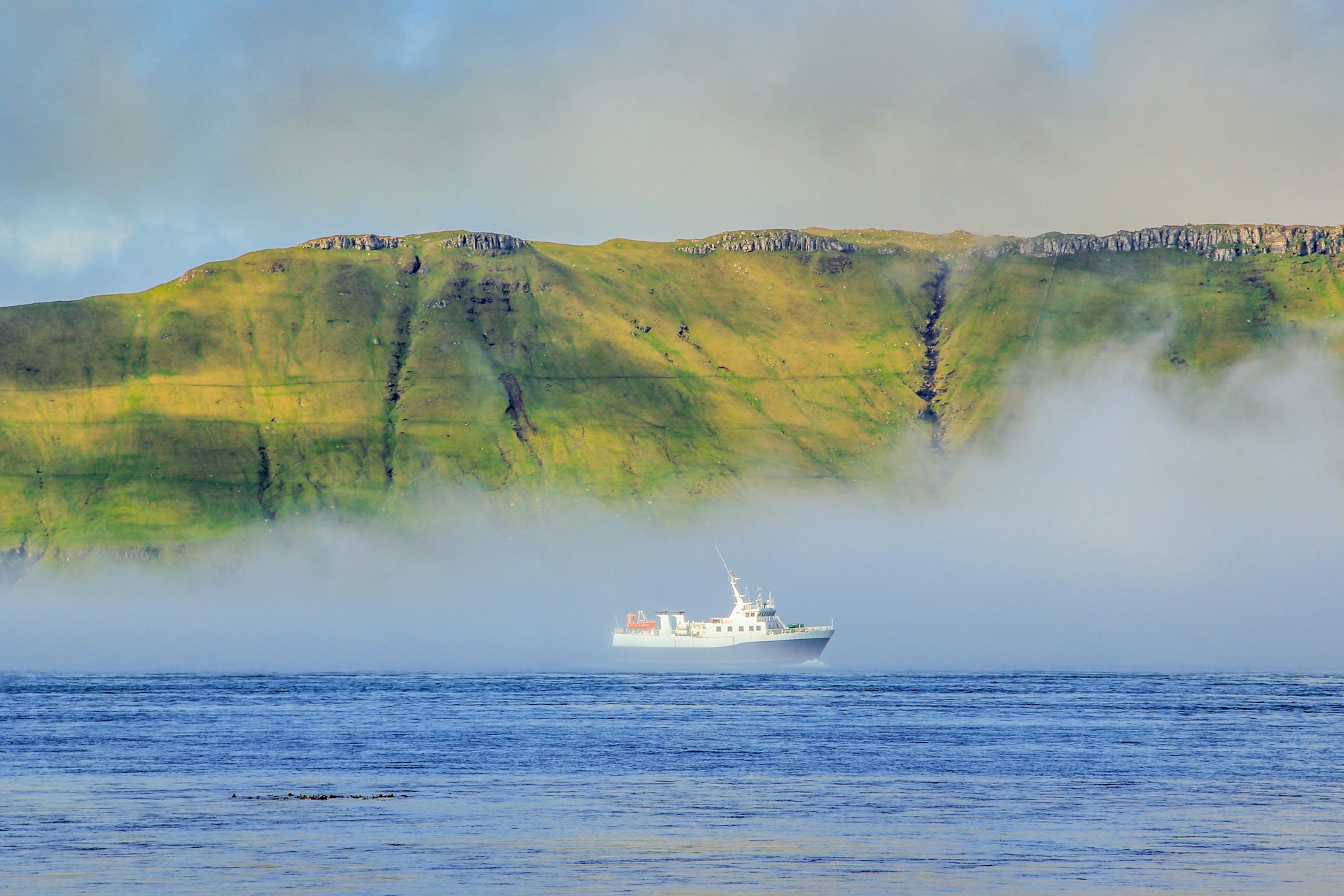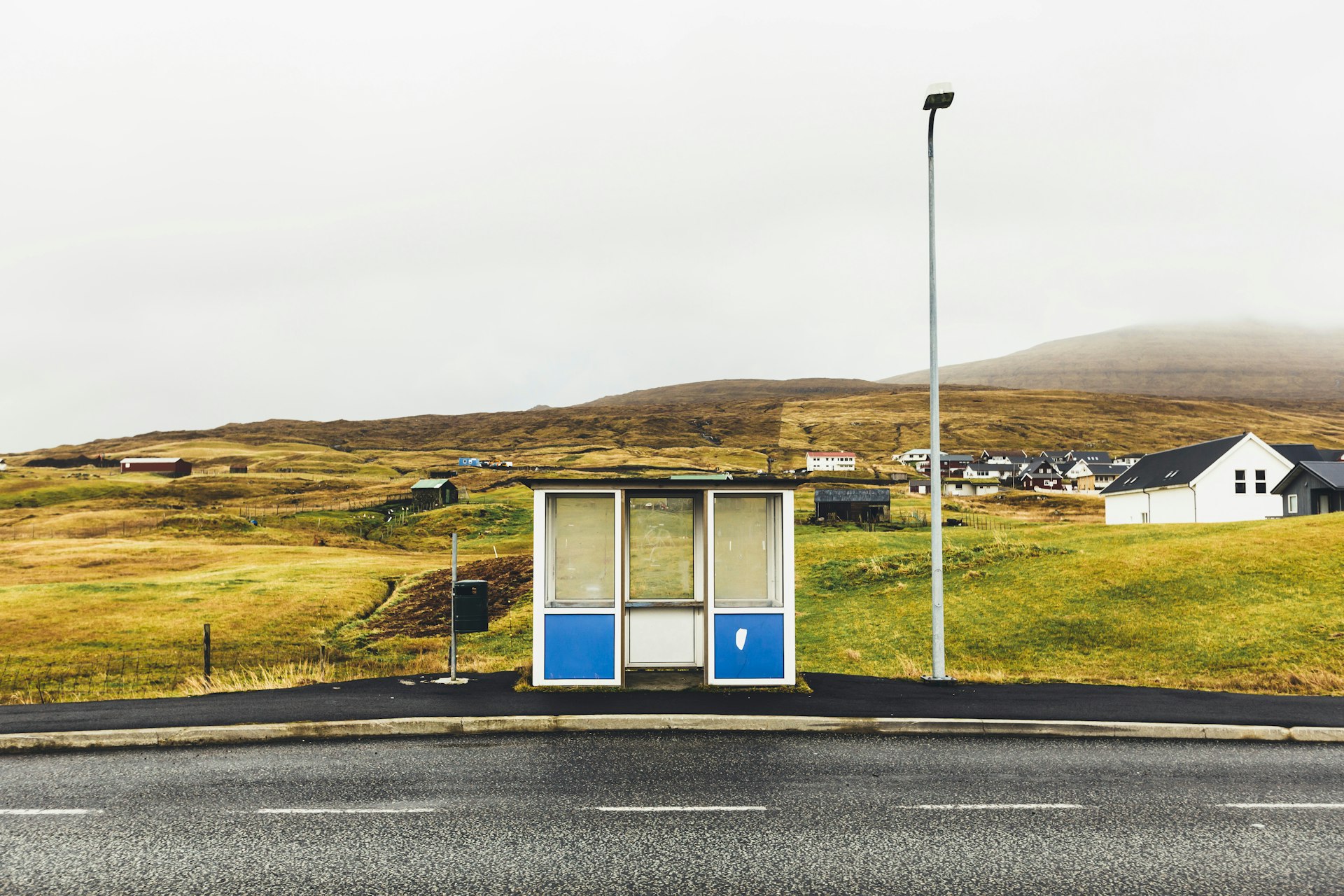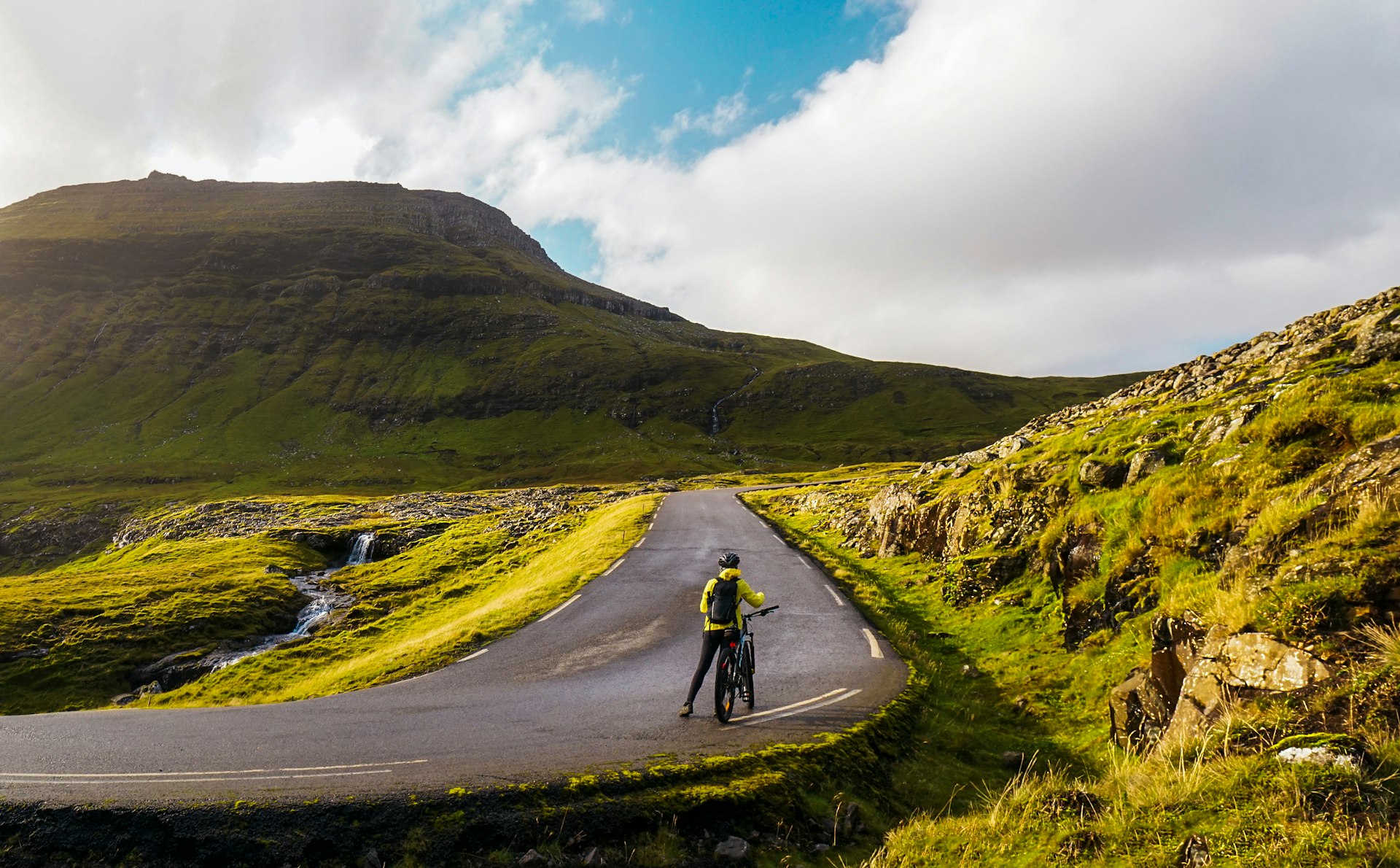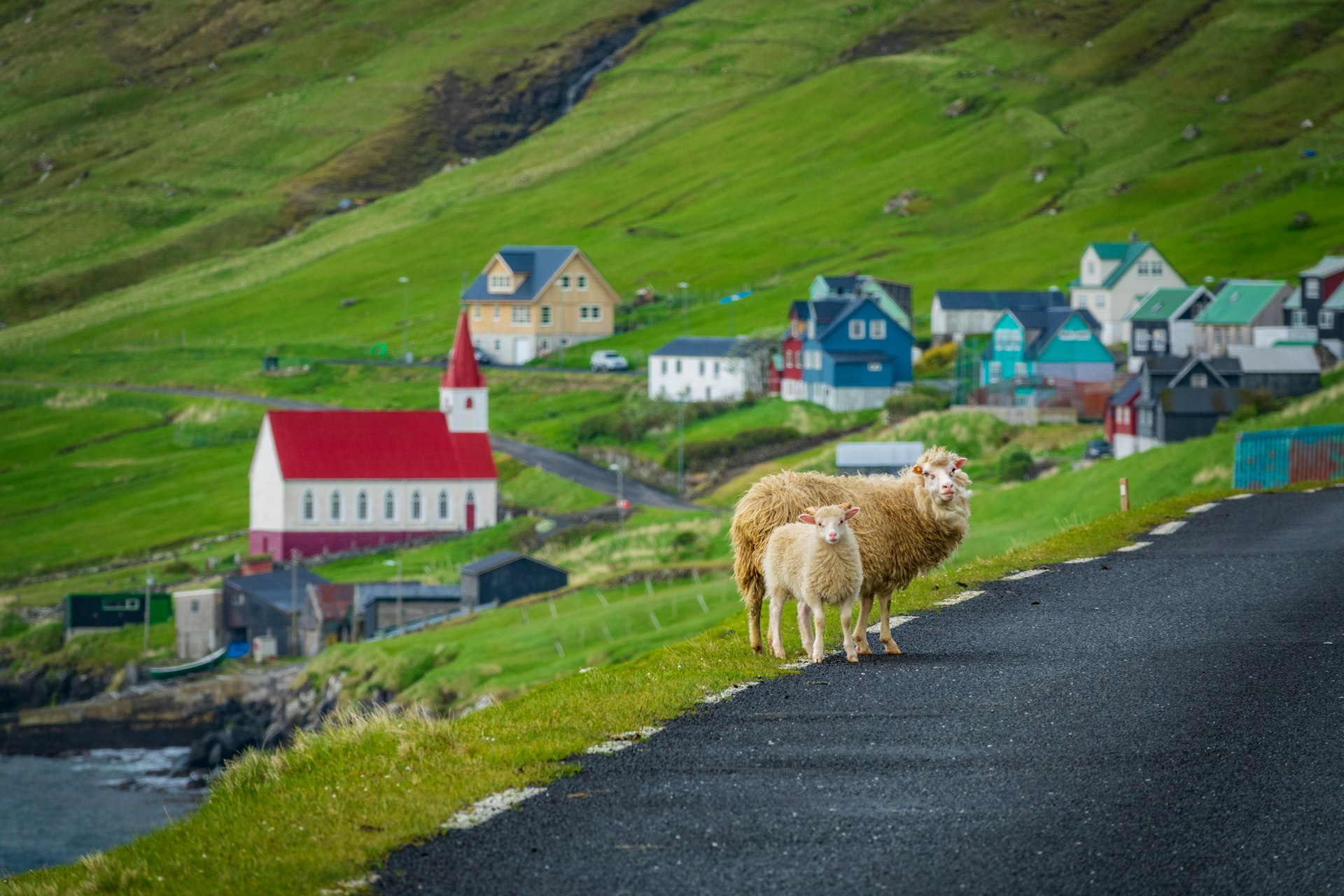For a small nation spread across 18 different isles, you might be surprised to find out how easy it is to get around the Faroe Islands.
The archipelago is connected by ferry and subsea tunnels and is home to the world’s first undersea roundabout. Roads are paved all over the islands, making them suitable for all vehicles and even hardy cyclists. Public transport options also abound, with city buses and rural buses connecting communities, with a helicopter service for locals and visitors too.
For maximum flexibility, rent a car
It’s never been more true that the journey is the destination than when you’re driving around the Faroe Islands. If your nerves can take it, you’ll be well rewarded as you zigzag down switchback roads with a view of sea stacks and islands, skirt fjords, and plunge through undersea tunnels and boreholes through mountains en route to small communities, beaches, scenic views and more. It’s the most time-efficient way to get around if you’re only coming for a short trip, allowing you to change plans easily if you need to. The Faroe Islands has several scenic drives, called Sóljuleiðir (buttercup routes), marked on maps and signs with a buttercup, the country’s national flower.
Car rental is available at the airport and in Tórshavn; you’re advised to book ahead. Electric cars are offered by a handful of rental companies including Berg Hestar and 62North. At present there are at least four charging spots on the islands with more coming, but the introduction of electric cars is still in its infancy.
Driving tips: watch out for sheep!
Some things to know before you put your pedal to the metal: driving in the Faroe Islands has a few rules you need to adhere to. Drive on the right. Keep your lights on at all times. Using your phone at the wheel and driving with alcohol in your system are both illegal.
Drive carefully and stop often, using the laybys to pull over when faster local cars are behind you. Some roads are single-track; some of the mountain tunnels are as well, even though traffic flows in both directions, so drive at a safe speed and be alert for passing places.
Sheep are a constant feature of the roads, and in spring, lambs gambol all over the place, including in front of cars. If you hit one, you must call the police on +298 351448 and inform them. You are not liable for the cost of the unfortunate sheep; this allows the farmer to claim on their insurance.
If you’re parking in Tórshavn, Klaksvík or at Vágar airport, you will need to use a parking disc to show what time you parked, as parking rules apply. Elsewhere, it’s not an issue.

Catch the ferry for a budget-friendly cruise
Local ferry routes in the Faroe Islands allow you to take a car with you and explore for as little as 15 kr per trip. Routes are publicized on ssl.fo; note that there is seasonal variation in terms of frequency. A multi-day travel card covers ferries as well as buses, or you can pay per trip. Typically you just pay one-way.
The exception to this is the ferry to Mykines, which is not included in the travel card. It runs daily from May to August, three times a week in April and September, and not in the winter. Rates are around 60 kr each way. For this and any other ferry routes, it’s a good idea to book your trip early into your stay, so that it can be rebooked if bad weather stops play. Cancellations are common.
Remember to pay tolls on undersea routes
There are four undersea tunnels in the Faroe Islands and they are easy to navigate. All tunnels require a toll; the most expensive is the undersea roundabout, Eysturoyartunnilin. You can pay the fee online or at a petrol station; perhaps the easiest way to do it is to add the tunnels to your rental car bill and pay at the end.

On a budget? Bus routes are your savior
Blue coaches ply the islands’ rural roads while free red buses operate in towns; with a little advance planning and enough time, they can be a great way to reduce your costs. On entry to Vágar airport, there is a direct bus route into Tórshavn.
In Tórshavn itself, a lot of the main bus routes are set up so you can do an easy day trip from the town to key attractions, including Gásadalur. For your best options, look at the timetables on ssl.fo. Buses run all over the islands and are generally reliable and on time. The drawback is often the weather, and a sometimes limited timetable.
Public transport passes are available online and at the ferry terminals, allowing you to travel on all bus and ferry routes (with the exception of the ferry to Mykines) for 500 kr for 4 days.
How do you book a helicopter trip in the Faroe Islands?
Helicopter transport is highly subsidized in the Faroe Islands to allow local people to get around easily, but while it was once an option for tourists to enjoy the same service, it is now discouraged so that local people can benefit from it. For visitors, it’s still possible to book a helicopter flight one way (you will have to return by bus or ferry) to larger towns, including Klaksvík and Tórshavn, for around 645 kr one way. A timetable is available online at Atlantic Airways and there are restrictions about how far in advance you can book. The airline also offers a range of sightseeing trips by helicopter.

Can you cycle in the Faroe Islands?
Yes! With paved roads, sweeping hills and majestic scenery, on a good day, cycling in the Faroe Islands can’t be beaten. Bike rental is available in Tórshavn, with mountain bikes and e-bikes available, along with bike tours, and you can even take a bike on the bus for free if there’s enough room onboard.
ARA Tours offer guided day tours and bike rentals, as do operators via Guide to Faroe Islands, but for serious cyclists, bringing your own bike is a good option. Bikepacking is a niche but growing way to explore the islands, although at present there are no outfitters offering luggage transfers. Bike lights are required; roads are safe and usually quiet but cycling through tunnels, especially narrow one-way mountain tunnels, takes a little nerve. You can also cycle the undersea tunnels. Note that off-road biking is prohibited; it’s road biking only and there are no cycle paths.
Accessible transportation in the Faroe Islands
The Faroe Islands is a little limited in terms of accessible transport options, although there are some accessible hotels, restaurants and cultural centers. City buses accommodate wheelchairs; rural buses/coaches do not. Ferries have elevators and wheelchair-friendly ramps. Local group MEGD can provide more information about accessible transport on the Faroe Islands. You can also consult our accessible travel resource page.
